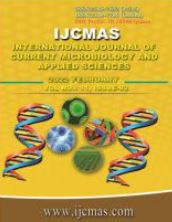


 National Academy of Agricultural Sciences (NAAS)
National Academy of Agricultural Sciences (NAAS)

|
PRINT ISSN : 2319-7692
Online ISSN : 2319-7706 Issues : 12 per year Publisher : Excellent Publishers Email : editorijcmas@gmail.com / submit@ijcmas.com Editor-in-chief: Dr.M.Prakash Index Copernicus ICV 2018: 95.39 NAAS RATING 2020: 5.38 |
Mushroom cultivation is an economically viable process for the conversion of various lignocellulosic residues. Recently in order to increase the feasibility of mushroom production, research has been carried out to investigate the use of residues as substrates and the possibility of obtaining two or more products in a single bioprocess. The aim of this study wasto investigate the potential of biomass residues from street markets in the city of Manaus (Amazonas, Brazil) as a substrate for the production of oyster mushroom and laccase. Pleurotus ostreatus was cultivated in the following biomass residues: a) peel from the fruit of Astrocaryum aculeatum Meyer, b) peel from the fruit of Bactris gasipaes Kunth, c) fibers from the endocarp of the fruit of Euterpe oleracea Mart. and d) peel from the fruit of Theobroma grandiflorum Schumann. The peel from the fruit of Bactris gasipaes was the best substrate to produce oyster mushroom (4.8 % biological efficiency -ratio between the fresh weight of the mushroom and the dry weight of the compost), and the peel from the fruit of Astrocaryum aculeatum was the best substrate for laccase production (21,766 U/Kg). The present work is important since it allowed us to demonstrate that two biomass residues from Amazonian plants could be utilized to produce mushrooms and laccases.
 |
 |
 |
 |
 |